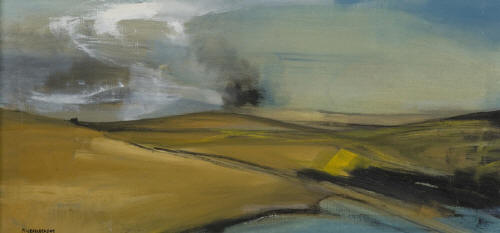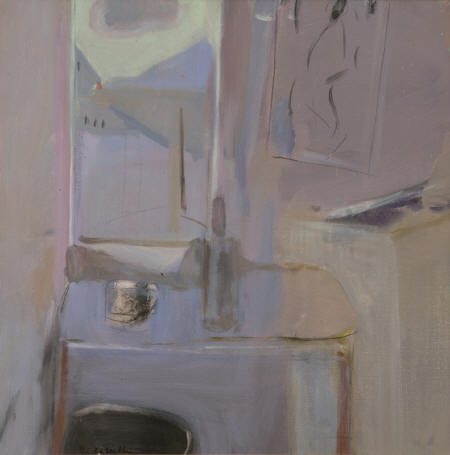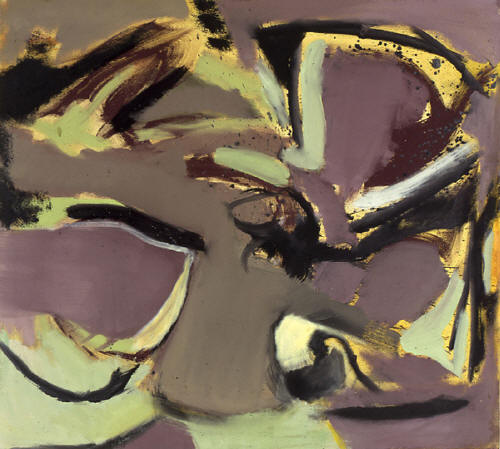|
|
| home | features | exhibitions | interviews | profiles | webprojects | gazetteer | links | archive | forum |
|
Margo Maeckelberghe and Rose Hilton: Two Penwith painters Peta-Jane Field
There is a sense that an ambiguity has always existed about this land – the contrast between the picturesque and the harsh reality – the visiting photo-snapping tourists in their open top buses and the day-to-day grind for farmers eking out an existence from fields whose boundaries have not changed since the Iron Age. These two exhibitions at Tate St Ives add to this enigma.
It might be expected that Maeckleberghe exposes the moors’ elemental rawness, because she is ‘part of that ..my family farmed it and tin-mined it … I am a Cornish Bard – and Cornwall does have a kind of Celtic feeling that very few people paint.’ Her use of sweeping gestures and unmodulated heavy black lines - a style very evocative of the 1950s - has been a constant and unchanging feature of her work for decades. Hilton’s output,
which is
more varied, seems to offer a respite from
Maeckelberghe’s
harsher abstracted reality. Taking influences from an earlier pre-war period,
particularly the French impressionists and post- Summer Forms, 1989 is a visual poem to the rich beauty of Cornish rock forms bathed in sunlight and warmth but Winter, Botallack, 1999 contains ‘fierce colours and dynamic rhythms which make this a formidable painting but beautiful’ painting.’ Two new paintings are displayed in the curved gallery facing Porthmeor Beach, Interior, 2007 and Kenidjack, 2007. Both paintings contain Hilton’s exquisite pale greys and lilacs and soft forms, the exterior image mirrors the interior, echoing her comment about another painting Grey Kitchen, 2004 (above right) when she says, “I deliberately set out to convey the sense of the soft, all-over greys of Cornwall sky and sea.”
Visiting these exhibitions makes a mockery of trying to label female artists: Hilton arguably is the more apparently feminine until confronted with the strong colours and sheer force of Winter, Botallack, 1999 (above left), and it is hard to see in Maeckleberghe’s work any indications of gender, despite Yakir’s suggestion that reclining female forms are present in the landscape. Nevertheless, their work indicates that a conversation between these two powerful painters would make interesting listening and leave behind a great sense of harmony despite their different approaches – especially given their history which is so closely entwined with the St Ives modernists, Roger Hilton, Peter Lanyon and Bryan Wynter.
Margo Maeckelberghe: 'Extended Landscape' and Rose Hilton:'The Beauty of Ordinary Things' was at Tate St Ives during Spring 2008
|
|
|




